SkillBridge
Transform your career with CyberForge SkillBridge 6-month Online Internship Program, learning crucial Skills & Tools, preparing for top cybersecurity certifications with expert/AI-driven guidance while working on real-world Cybersecurity Operation, Threat Hunting and Development projects.
This online internship program consists of
- 60+ hours Recorded Lectures
- Optional 30 days in-office/person work.
- Access to MCQs, Assignments and CTFs
- Learn to create Practice Setups and Labs
- Work on real world Cybersecurity Projects
- Support for submissions in Conferences
- Discounts on Certification Exam vouchers
- AI/Human interviews
- Resume Building and Review
- 1:1 doubt solving calls
- Discord support
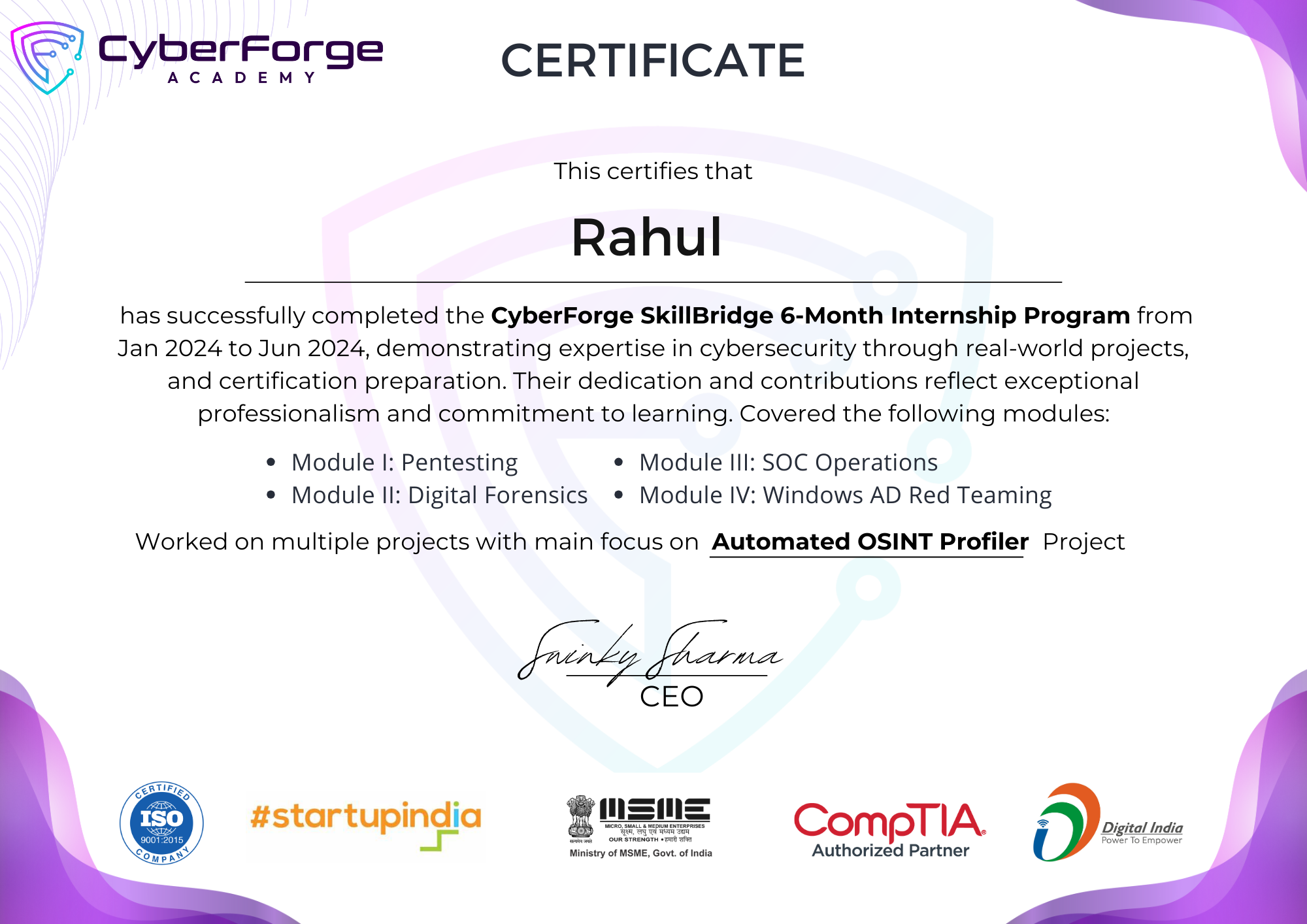
How it helps?
Problems for freshers to secure entry level Cybersecurity jobs and how SkillBridge helps to solve them.
Hurdles
How SkillBridge Helps
Lack of Certifications
Prepares for Key Certifications
Prepares for CompTIA Security+, EC-Council CEH, Cisco Cyber Ops, AWS Certified Security, Splunk Core Certified User. 85% of Fresher Cybersecurity roles require at least one of these certifications.
Little Usable Skills and Knowledge of Tools/Technologies
Comprehensive Skills Coverage
Covers SIEM, Docker, PowerShell, AWS, Web/Network/Web Pentesting, Splunk, Wireshark, Nmap, Burp Suite, Linux, and more. These skills are required in 80% of Fresher Cybersecurity roles.
Generic Resume and No Cybersecurity Projects
Guidance on Real-World Projects
Guides on real-world, relevant Cybersecurity projects, tools, and research.
No Interview Experience
Interview Preparation
Helps in preparation with regular interviews with AI and Experts.
Scoring Interview Off-Campus
Placement Assistance
We will work with our industry partners to get students shortlisted for Off-Campus interview for Cybersecurity jobs. While we are confident in getting you shortlisted, we can't promise placement.
Program Syllabus
The SkillBridge program provides a comprehensive training in cybersecurity, divided into 4 self-paced modules covering Pentesting, Digital Forensics, Security Operation Center Operations, and Active Directory Red Teaming.
Module I: Pentesting
- Fundamentals
- Virtualization types: Type 1 (bare-metal) and Type 2 (hosted)
- Managing Virtual Machines in VirtualBox
- Understand the basics of Docker and Docker Compose
- Create Docker images and run containers
- Run Docker-Compose setup
- Components of Operating Systems
- Hands-on with Linux commands
- Learn Linux filesystem and permissions
- Types of Computer Networks
- Computer Networking Basics (IP, Subnet, Netmask)
- Visualize layers of TCP/IP with Wireshark
- Understand important network protocols (HTTP, HTTPS, FTP, SSH, SFTP) with Wireshark
- Exploit vulnerabilities and misconfigurations in FTP and SSH servers
- CTF: Exploit vulnerable/misconfigured services and analyze packet captures to find flags
- Cybersecurity Fundamentals
- CIA (Confidentiality, Integrity, Availability)
- AAA (Authentication, Authorization, Accounting)
- Generate hashes with Linux commands and online tools
- Learn symmetric and asymmetric encryption and digital signatures
- Break hashes with Hashcat
- Crack passwords with John the Ripper
- Case Study: WannaCry Ransomware
- CTF: Break hashes and crack passwords of protected files
- Host Pentesting
- Stages of Penetration Testing
- Scan networks to discover hosts
- Service enumeration with Nmap
- Exploit the vsftpd backdoor vulnerability manually
- Use Metasploit for exploitation and gain meterpreter
- Generate post-exploitation payloads using msfvenom for Linux and Windows
- Perform privilege escalation in Linux systems
- CTF: Exploit vulnerable hosts
- Web Application Pentesting
- Understand OWASP Top 10 vulnerabilities
- Deploy vulnerable web apps: DVWA, OWASP Juice Shop, and OWASP WebGoat
- Exploit weak session ID vulnerability on OWASP Juice Shop using Burp Proxy and Burp Repeater
- Perform SQL Injection attacks on DVWA (locally hosted) using SQLMap
- Exploit Cross-Site Scripting vulnerability manually and using XSS Strike
- Perform automated and manual scans on DVWA using ZAP
- Conduct network scans using Nessus
- Perform dictionary attacks on vulnerable web apps using Burp Intruder
- CTF: Identify and Exploit Web Application Vulnerabilities
- Network Security
- Wireless adapter operation modes: Monitor and Managed
- Capture Wi-Fi traffic with Wireshark and wireless adapter
- Change adapter's mode using airmon-ng
- View devices in a WiFi network using Wireshark
- Crack a WPA WiFi access point's password using aircrack-ng
- Decrypt encrypted WiFi traffic captured on Wireshark
- Tools and Python scripting
- Shodan to find live vulnerable servers
- Refine search results using Google Dorks
- Whois lookup and urlscan.io for recon
- Phishing campaigns using Gophish
- Hack into web browsers using The BeEF
- WordPress vulnerabilities scan
- Websites scan for vulnerabilities using Nikto and Nuclei
- Python scripts for traffic sniffing with the Scapy
- Dictionary attacks using Python scripts with pexpect and paramiko
Recommended Certifications:
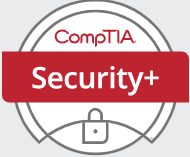
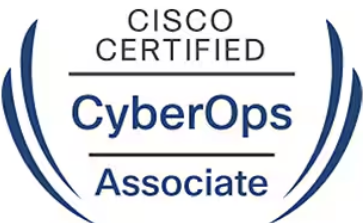
Tools:
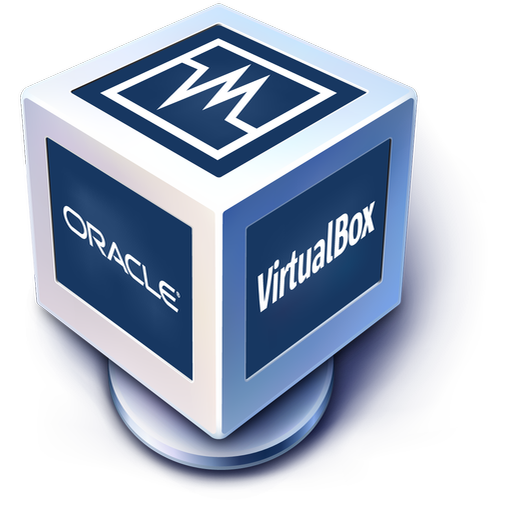
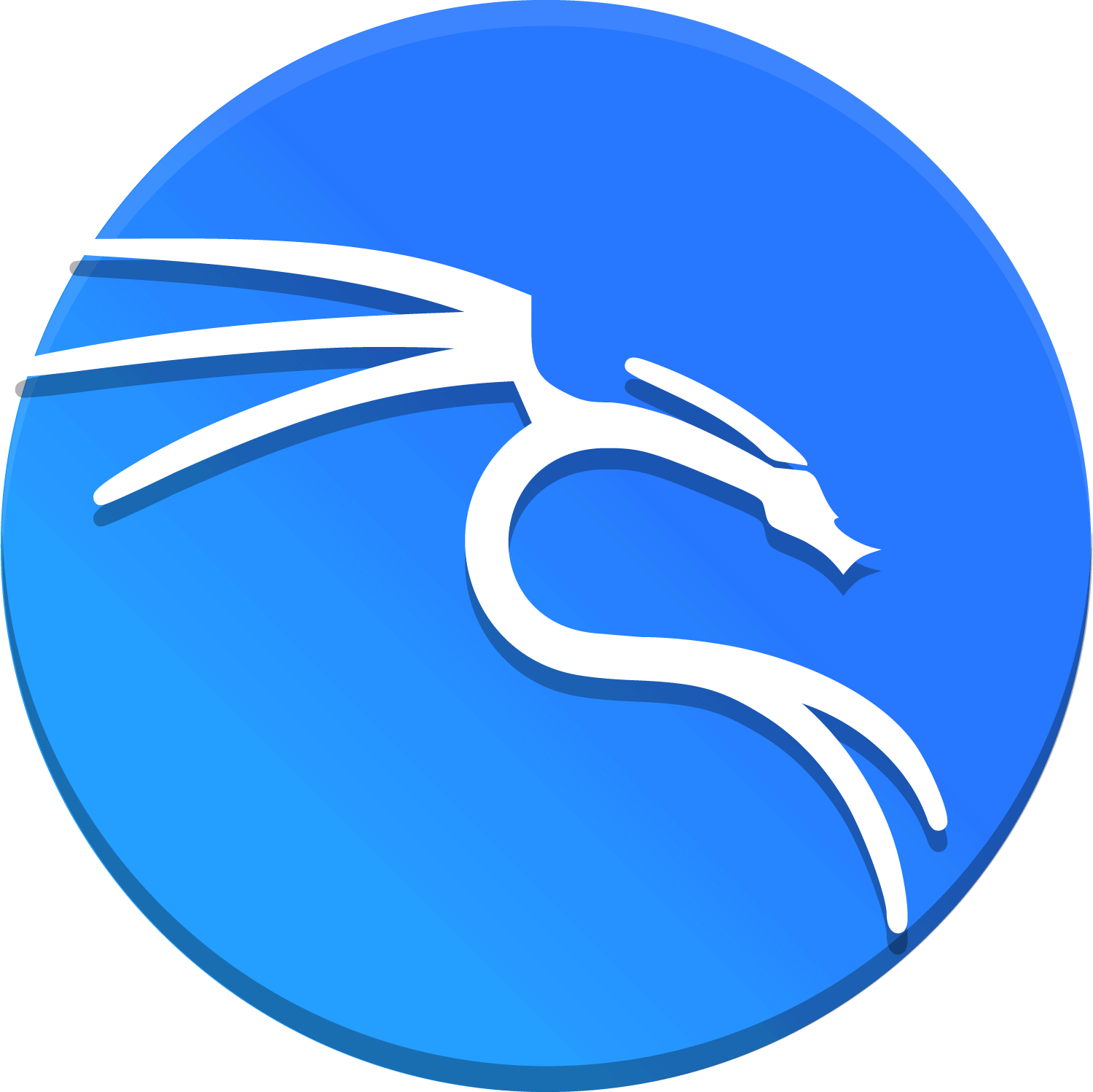








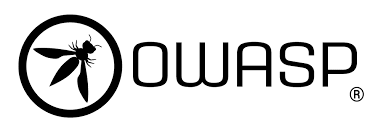





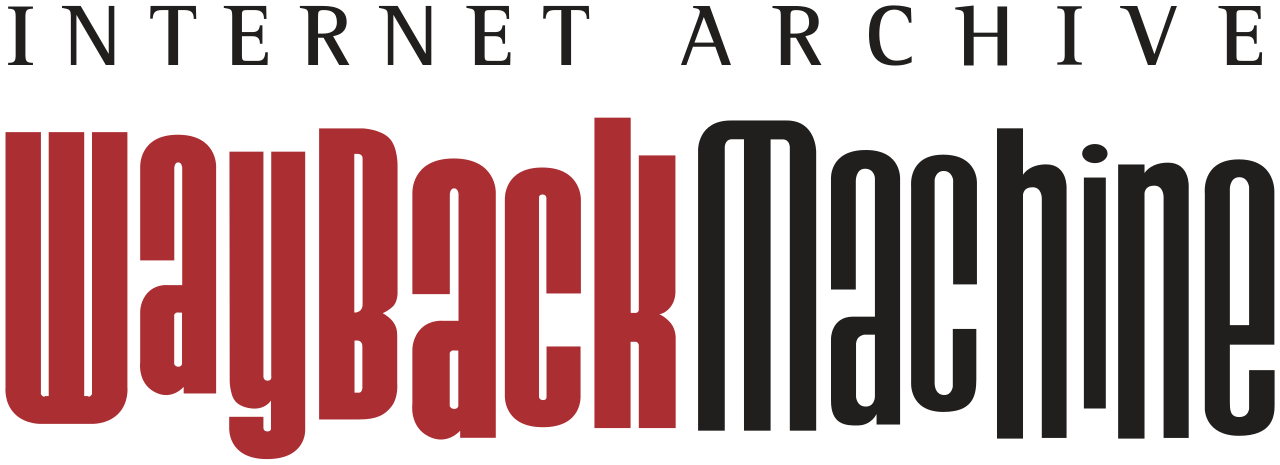


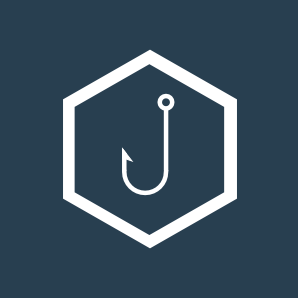







Module II: Digital Forensics
- Introduction and Disk Forensics
- Digital Forensics Process
- Chain of Custody
- Evidence Acquisition: Live and Dead
- Create digital image of a disk
- Processing disk image for artifacts
- Recovering deleted files from Disk
- Collecting Forensics artifacts: Browser activity, Recently opened files, Installed programs, Executed programs, User details
- CTF: Process a real-world image to investigate the case
- Windows Forensics
- Windows Event Logs
- Event Log extraction to reconstruct Timeline
- Log Analysis with Event Log Viewer
- Advanced analysis: Log Parser and Log Parser Lizard
- Threat Hunting in Logs with Hayabusa
- Sigma rules for detection
- CTF: Analyze provided Event Logs to investigate the case
- Memory Forensics
- Dumping RAM for Linux and Windows machines
- RAM Dump Analysis with Volatility
- Working with Volatility Workbench
- Recovering Forensics Artifacts from Memory: Process memory, Process Binary, Open File Descriptors, Network Connections, Process Hierarchy
- Case Study: Cridex Malware Investigation
- Redline for Live Acquisition and quick analysis
- CTF: Analyze provided RAM Dump to investigate the case
- Network Forensics
- Networking Traffic capture and Analysis using Wireshark
- HTTP Traffic analysis and object extraction
- TCP/UDP Stream reconstruction to uncover complete exchange
- Case Studies: Redline Infostealer Malware Traffic Analysis, Phishing Attack Traffic Analysis
- Network Forensics to recover artifacts with Network Miner
- Macroanalysis to locate traffic trends and outliers: CapAnalysis, Xplico
- CTF: Analyze provided PCAP to investigate the case
- Malware Containment and Analysis
- Threat hunting with Master Parser and DeepBlue CLI
- Log Enrichment with Sysmon
- Sandboxes and their usage: Containment Sandboxes (Sandboxie, Firejail), Malware Analysis Sandboxes (Any.run, Cuckoo, Joe Sandbox)
- CTF: Analyze provided Malware Sample to investigate the case
Tools:
















Module III: Security Operation Center Operations
- Introduction to SOC
- Cyber Security Framework (Identify, Protect, Detect, Recover, Govern)
- What an SOC is, its importance, and SOC Roles
- Career Path and required Skills
- Cyber Security Threats (Malware, Phishing, Insider Threats, Advanced Persistent Threats (APTs))
- Splunk SIEM
- How SIEM Works (Collect Data and Aggregation from Endpoints)
- Key Terms in SIEM (Events, Logs, Parsing, Normalization)
- Splunk SIEM Components (Forwarder, Indexer, Search Head)
- Setting up Splunk SIEM Server
- Configuring Splunk SIEM agents
- Splunk Query Language (SPL) queries
- Uploading logs (Windows and Linux) for threat hunting
- Create dashboards for threat hunting
- CTF: Use Splunk SIEM to locate issues
- Splunk SOAR
- Security Orchestration Automation and Response (SOAR) elements: Threat Intelligence, Automation, Response, Orchestration
- Key terms in Splunk SOAR (App, Asset, IOCs, Playbook)
- Understanding Threat Intelligence Feeds (Open-Source, Free, and Commercial)
- Integrating Splunk SOAR to Splunk SIEM
- CTF: Create Custom dashboard for real-world threat hunting on Windows Event Logs
- Wazuh XDR
- Endpoint Detection & Response (EDR) vs Extended Detection & Response (XDR)
- Host Based Intrusion Detection System (HIDS): Open Source Security Event Correlator (OSSEC)
- Wazuh: Open Source XDR solution
- Wazuh core components (Agent, Server, Indexer)
- Building custom Threat Hunting dashboards with Wazuh
- Monitor compliance using the Compliance Dashboard
- Detect known Tactics, Techniques, and Procedures (TTPs)
- Adversary emulation using Atomic Red Team
- CTF: Detect and respond to threats using Wazuh
Recommended Certifications:

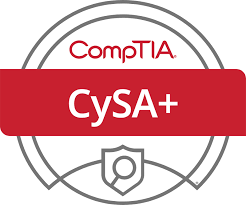
Tools:




Module IV: Active Directory Red Teaming
- Understanding Active Directory (AD): Components and Functions
- AD Hierarchy: Forests, Domains, Organizational Units, and Trusts
- Common AD Services: LDAP, Kerberos, DNS, and GPOs
- Setting up lab AD environment
- Enumerating Users, Groups, and Computers using PowerView and BloodHound
- Gathering Domain Information with LDAP Queries and AD Explorer
- Identifying Misconfigurations and Privilege Escalation Paths with BloodHound
- Exploiting Weak Passwords and Kerberos Pre-Authentication
- Phishing and Credential Harvesting Techniques
- Extracting NTDS.dit and Registry Hives for Credentials
- Dumping Credentials with Mimikatz: Kerberos Tickets, Plaintext Passwords, and Hashes
- Techniques for Creating Backdoors: Golden and Silver Tickets, Skeleton Keys
- Pass-the-Hash and Pass-the-Ticket Attacks
- Lateral Movement with PsExec, WMI, and SMB Shares
- CTF: Start with assumed breach and pwn Domain Admin
Tools:
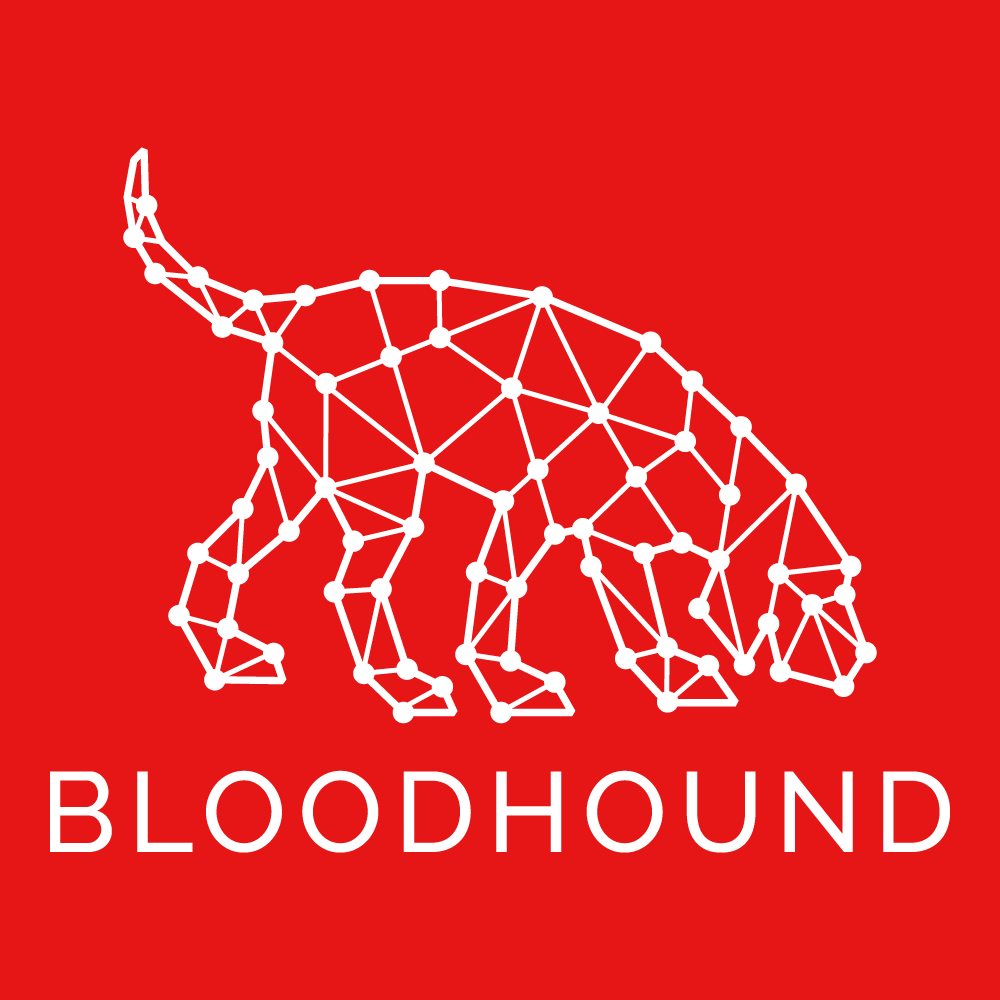



Benefits of SkillBridge
Expand Employability
Invest a few hours weekly to enhance your career prospects.
Advanced Skills Preparation
Prepare for cybersecurity certifications with targeted learning.
Polished Resume
Showcase real-world cybersecurity projects on your resume.
Improved Interview Skills
Boost your performance in job interviews.
Exclusive Discounts
Access discounts on advanced cybersecurity bootcamps.
Frequently Asked Questions (FAQ)
Application Process
Early Bird: ₹ 24,999 (Actual: ₹ 34,999)